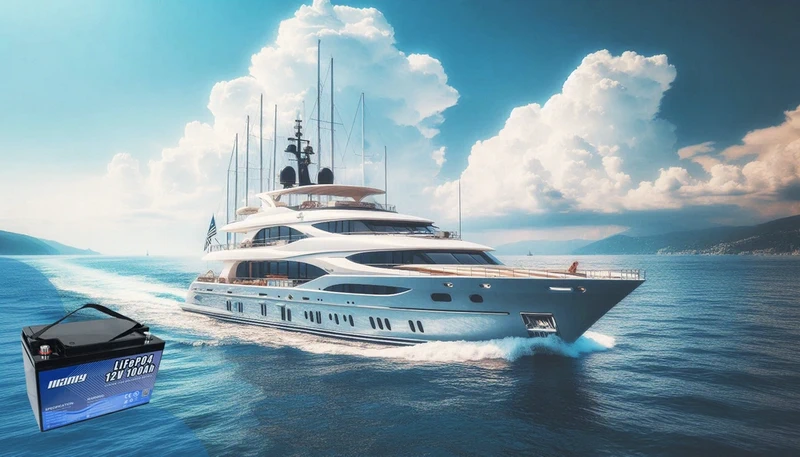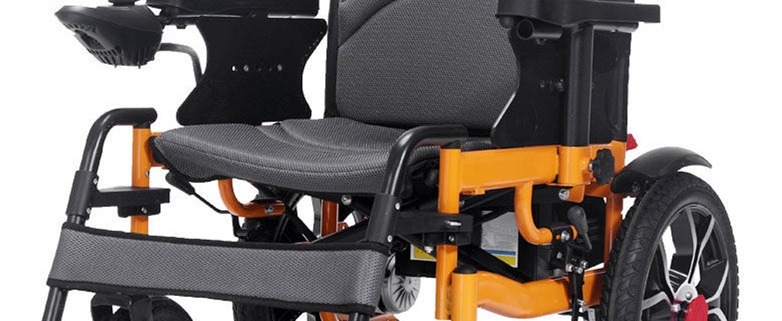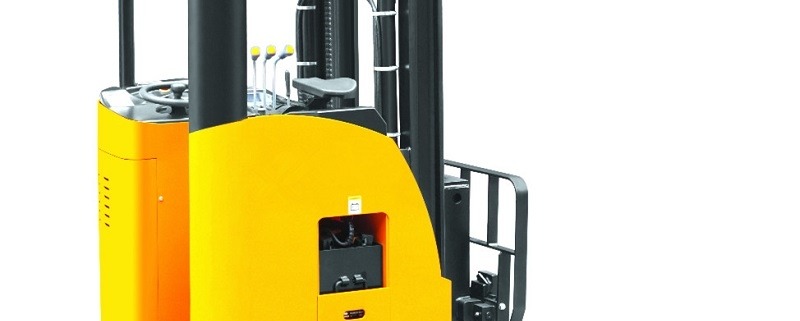Charge a Marine Battery: Step-by-Step Guide
Table of Contents
- Charge a Marine Battery: Step-by-Step Guide
Marine batteries are the lifeblood of any boat—they power your engine, lights, gauges, and all the essential onboard electronics. Without a healthy battery, your boat is a pretty shell on the water. In this article, we dive into the burning question: how do I charge a marine battery? We’ll explore everything from the ins and outs of battery types to a step-by-step guide on charging. Plus, we’ll compare the advantages of a marine li ion battery with those of traditional marine deep cycle batteries. Let’s get started on this exciting journey to keep your boat powered and your adventures safe!
Understanding Marine Batteries
1. Types of Marine Batteries
Not all marine batteries are created equal. When it comes to powering your boat, you typically have three choices:
- Starting Batteries: These provide that quick, powerful burst of energy to get your engine running, but they’re not built for long-term power.
- Deep Cycle Batteries: Designed for sustained power delivery, these batteries keep your lights, electronics, and other accessories humming for hours.
- Dual-Purpose Batteries: These offer a blend of starting and deep cycle capabilities, which can be handy on smaller vessels with limited space.
Most boaters prefer marine deep-cycle batteries for extended use and reliability. These batteries handle deep discharges better, ensuring their boats stay powered even during extended trips.
2. Battery Chemistry and Technology
Battery chemistry plays a pivotal role in performance and longevity. Traditional chemistries—like lead-acid, AGM, and gel—have long been the go-to options. However, a modern contender is changing the game: the marine li ion battery.
Why choose a marine li ion battery? Because it’s lightweight, lasts significantly longer, and requires minimal maintenance compared to conventional batteries. Think of it as upgrading from an old clunker to an award-winning sports car in the world of batteries. This cutting-edge technology improves performance and enhances safety and efficiency, making it a popular choice among serious boaters.
Learn more about lithium-ion battery technology on Wikipedia.
Preparing to Charge Your Marine Battery
Before you begin the charging process, a little preparation goes a long way toward ensuring safety and efficiency.
1. Assessing Your Battery’s Condition and Type
First, give your battery a thorough once-over. Check its age, inspect for any signs of corrosion, and verify the battery type. Understanding whether you’re dealing with a marine li ion battery or deep cycle batteries is crucial—it influences which charger to use and how you’ll maintain it. A well-maintained battery lasts longer and performs better when you charge a marine battery.
2. Choosing the Right Charger
Next up is selecting the correct charger. You generally have two main options:
- Onboard Chargers: Permanently installed on your boat, these chargers make it super convenient to power up as long as you have access to a standard outlet.
- Portable Chargers: These allow you to charge your battery wherever you are, which is ideal for smaller boats or when space is at a premium.
Make sure the charger you choose matches your battery’s chemistry and voltage. This step is especially important for those opting for a marine li ion battery or deep cycle batteries—using the wrong charger can lead to underperformance or even damage.
3. Safety Precautions Before Charging
Safety should always be your top priority. Here are some key precautions:
- Work in a Safe Environment: Charge your battery in a well-ventilated area and ensure the temperature is within the manufacturer’s recommended range.
- Clean Battery Terminals: Dirty or corroded terminals can interfere with the charging process, so give them a good clean before you connect anything.
- Gear Up: Wear protective gear such as gloves and eye protection to prevent mishaps.
- Follow Manufacturer Guidelines: Always adhere to the specific recommendations provided by your battery and charger manufacturers.
By taking these simple steps, you will ensure your safety and optimize the performance and lifespan of your battery.
Step-by-Step Guide: How to charge a marine battery
Let’s get into the nitty-gritty of charging your boat’s power source. Follow these steps, and you’ll power up like a pro in no time!
1. Cleaning and Inspecting Battery Terminals
Before you plug anything in, clean your battery terminals. Dirty or corroded terminals can prevent your charger from doing its job, and no one wants a slow charge on a hot day!
- Tip: Mix some baking soda with water, scrub gently with a soft brush, and wipe dry.
- Why It Matters: Clean connections ensure that every bit of energy flows efficiently when you charge a marine battery.
2. Connecting the Charger
Now, let’s hook everything up:
- Positive (Red) Cable: Firmly attach this to the positive terminal.
- Negative (Black) Cable: Connect it securely to the negative terminal.
Double-check your connections, whether using a smart charger that adjusts the current automatically or a trusty manual charger. This step is vital, especially when working with a marine li ion battery or marine deep cycle batteries. Once the cables are locked in, plug in your charger and power it up. Easy as pie, right?
3. Monitoring the Charging Process
Keep an eye on your battery as it charges—this is where modern tech shines:
- LED Indicators: These give you a quick look at the charge level.
- Smart Apps & Timers: Many chargers have apps or built-in timers to let you know when you’re full.
By actively monitoring, you prevent overcharging and ensure your battery gets the right amount of juice.
4. Disconnecting the Charger Safely
When your battery is fully charged, it’s time to disconnect—but do it safely:
- Unplug the Charger: Always start by unplugging the charger from the wall.
- Remove the Negative Cable: Disconnect the black cable first.
- Disconnect the Positive Cable: Finally, remove the red cable.
Following this order helps prevent accidental short-circuits and keeps your battery in shape.
Best Practices for Marine Battery Maintenance
Regular maintenance keeps your battery performing like a champ. Here’s how to keep those power levels up!
1. Maintenance Tips for Prolonging Battery Life
- Routine Inspections: Check for any signs of corrosion or wear on the terminals.
- Clean Regularly: A little cleaning goes a long way in ensuring your connections are solid.
- Water Topping: Top up with distilled water when needed for lead-acid batteries.
By following these habits, you’ll always be ready to charge a marine battery and hit the water confidently.
2. Optimizing Charging Cycles
Different batteries have different needs:
- For a marine li ion battery: Enjoy the benefits of minimal maintenance and the ability to handle deeper discharges.
- For marine deep cycle batteries: Stick to regular, shallow discharges to keep them healthy over the long haul.
Tailoring your charging cycle to the specific battery type maximizes performance and extends lifespan.
3. Troubleshooting Common Issues
Even the best-maintained batteries can run into issues. Watch out for:
- Overcharging: This can overheat your battery and cause damage.
- Undercharging: Leaves your battery underpowered.
- Terminal Corrosion: Hinders efficient energy transfer.
If you notice any problems, check your charger settings and ensure you use the right equipment for your battery type.
Conclusion
1. Recap of Key Points
We’ve broken down how to charge a marine battery step by step—from cleaning and connecting to monitoring and safe disconnection. Each stage is crucial for keeping your boat’s power system in peak condition.
2. Final Tips for Maintaining Both Marine li ion battery and marine deep cycle batteries
Whether you opt for the cutting-edge marine li ion battery or the reliable marine deep cycle batteries, proper care and regular maintenance are your best friends. Tailor your charging habits to your battery’s specific needs, and you’ll enjoy award-winning performance on every trip.
3. Encouragement to Follow Best Practices for Reliability on the Water
Stick to these best practices, and you’ll be cruising with confidence. Keeping your battery in prime condition means fewer hassles and more time enjoying your time on the water. Let’s keep those adventures rolling, shall we?
For more detailed battery care tips and industry insights, check out reputable sources like the U.S. Department of Energy or Wikipedia’s battery technology page. Happy boating!
FAQ
1. Can you charge a marine battery with a regular charger?
While you technically can, it’s not recommended. Marine batteries require a charger that matches their specific chemistry and voltage. A regular charger may not provide the proper charging profile, leading to undercharging, overcharging, or even damage over time.
2. What is the best way to charge a boat battery?
The best way is to use a charger specifically designed for your battery type. Follow a step-by-step process: clean and inspect the terminals, connect the positive and negative cables correctly, monitor the charging process using bright indicators, and disconnect safely when fully charged. This ensures efficiency and longevity.
3.What kind of charger do I need for a marine battery?
You need a charger that is tailored to your battery’s chemistry—whether it’s a marine li ion battery or marine deep cycle batteries. Look for chargers with the correct voltage, charging algorithm, and safety features like automatic shut-off and intelligent monitoring for optimal performance.
Hot Resarch
Marine Battery Battery Manufacturer Lithium Battery
Hello
1. Define
Electric wheelchair is based on the traditional manual wheelchair, superimposed high-performance power drive device, intelligent control device, battery and other components, transformed and upgraded. With artificial control intelligent controller, can drive the wheelchair to complete the forward, backward, steering, standing, lying down, and other functions of the new generation of intelligent wheelchair, is modern precision machinery, intelligent NUMERICAL control, engineering mechanics and other fields of high-tech products.
2. Type
There are many types of wheelchairs on the market. According to the materials, they can be divided into aluminum alloy, light material and steel. For example, according to the type, they can be divided into ordinary wheelchairs and special wheelchairs. Special wheelchairs can be divided into: leisure sports wheelchair series, electronic wheelchair series, seat side wheelchair series, standing wheelchair series, etc.
3. Structure
Electric wheelchairs are generally composed of seats, armrests, bent-leg pedals, wheels, control systems, motors, batteries, and adapters.
4. Working principle
An electric wheelchair is a powered wheelchair that uses a battery as an energy source and is driven by an electronic device. The user can drive the wheelchair by himself through the control device.
5. Features
Driven by lithium battery, it can be recharged repeatedly, small in size, light in weight, energy saving and environmental protection;
Hand push, hand crank, electric driving, free conversion;
Foldable rack, easy to store and transport;
Intelligent control lever, both left and right hand can control;
The wheelchair armrest is also lifted, and the footrest can be adjusted and removed;
Adopt PU solid tires, waterproof and breathable seat backrest, seat belt;
Five speed adjustments, in-situ zero radius 360° turn at will;
Strong climbing ability, anti-backward tail wheel design;
High safety factor, intelligent electromagnetic brake and manual brake.
6. Suitable range
People with disabilities or people with limited mobility who can only live on wheelchairs.
Electric forklifts can generally be divided into three categories: counterbalanced electric forklifts, storage electric forklifts and reach electric forklifts.
1. Electric counterbalanced forklifts are powered by electric motors and batteries are used as energy sources. The carrying capacity is 1.0 to 4.8 tons, and the working channel width is generally 3.5 to 5.0 meters. No pollution and low noise.
2. Warehousing electric forklifts Warehousing electric forklifts are mainly forklifts designed for cargo handling in warehouses. Except for a few storage electric forklifts (such as manual pallet forklifts) that are driven by manpower, others are driven by electric motors. Because of their compact body, flexible movement, light weight and good environmental performance, they are widely used in the storage industry. When working in multiple shifts, a motor-driven storage forklift needs a spare battery.
3. The forward-moving electric forklift has a carrying capacity of 1.0 to 2.5 tons. The mast can be moved forward or retracted as a whole. When retracted, the width of the working channel is generally 2.7 to 3.2 meters, and the lifting height can reach up to about 11 meters. It is often used in warehouses. Medium-height stacking and picking operations.
A robot is a machine device that automatically performs work. It can accept human commands, run pre-arranged programs, or act according to principles established by artificial intelligence technology. According to the classification of International Federation of Robotics (International Federation of Robotics), robots are generally divided into industrial robots and service robots.
Service robots refer to equipment that is used in non-industrial production, has a semi-autonomous or fully autonomous working mode, and can provide beneficial services to humans in an unstructured environment.
Compared with industrial robots, service robots are closer to downstream end consumers, so the customer base of service robots is wider. Being closer to the end consumer makes the service robot possess the attributes of durable consumer goods such as electronics and home appliances. At present, service robots are mainly engaged in maintenance, repair, transportation, cleaning, security, rescue, monitoring, etc., with a wide range of applications.






